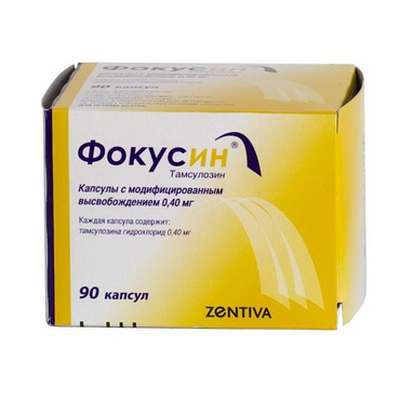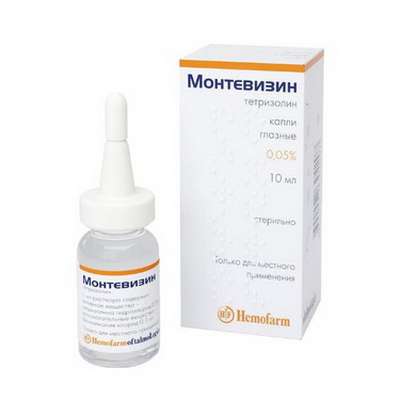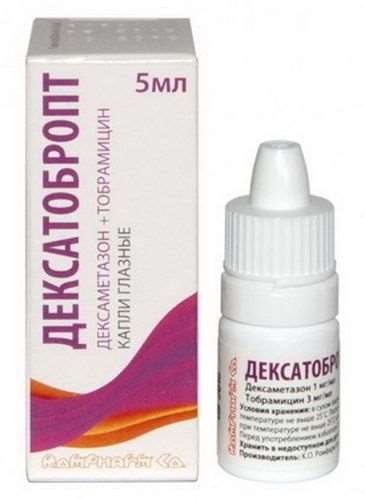Instruction for use: Levocetirizine
I want this, give me price
The Latin name of the substance Levocetirizine
Levocetirizinum (genus. Levocetirizini)
Chemical name
2- (2- {4 - [(R) - (4-Chlorophenyl) (phenyl) methyl] piperazin-1-yl} ethoxy) acetic acid
Gross formula
C21H25ClN2O3
Pharmacological group:
H1-Antihistamines
The nosological classification (ICD-10)
H10.1 Acute atopic conjunctivitis: Allergic conjunctivitis; Allergic eye diseases; Allergic conjunctivitis; Allergic conjunctivitis caused by chemical and physical factors; Allergic rhinoconjunctivitis; Allergic inflammation of the eyes; Spring Qatar; Spring keratitis; Spring conjunctivitis; Conjunctivitis allergic; Year-round allergic conjunctivitis; Exacerbation of pollinosis in the form of rhinoconjunctival syndrome; Acute allergic keratoconjunctivitis; Acute allergic conjunctivitis; Superficial bacterial infection of the eyes; Rhinoconjunctivitis; Seasonal allergic conjunctivitis; Seasonal conjunctivitis; SENSORY; Chronic allergic keratoconjunctivitis; Chronic allergic conjunctivitis
H11.4 Other conjunctival vascular diseases and cysts: Edema of the conjunctiva; Secondary hyperemia of the eye; Hyperemia of the conjunctiva; Hyperemia of the membranes of the eye
J00 Acute nasopharyngitis [rhinitis]: Viral rhinitis;Inflammation of the nasopharynx; Inflammatory Nose Disease; Purulent rhinitis; Nasal congestion; Nasal congestion due to cold and flu; Difficulty with nasal breathing; Difficulty with nasal breathing for colds; Difficult nasal breathing; Difficult nasal breathing for colds; Nasal hypersecretion; Coryza; ARI with phenomena of rhinitis; Acute rhinitis; Acute rhinitis of various origins; Acute rhinitis with thick purulent-mucous exudate; Acute rhinopharyngitis; Edema of the mucous membrane of the nasopharynx; Rhinitis; Rhinorrhea; Infectious-inflammatory disease of ENT organs;Severe cold; Rhinopharyngitis
J30 Vasomotor and allergic rhinitis: Allergic rhinopathy; Allergic rhinosinusopathy; Allergic diseases of the upper respiratory tract; Allergic rhinitis; Allergic rhinitis seasonal; Vasomotor runny nose; Prolonged allergic rhinitis; All-year-round allergic rhinitis; All-year allergic rhinitis; Year-round or seasonal allergic rhinitis; All-the-year-round rhinitis of an allergic nature; Rhinitis vasomotor allergic; Exacerbation of pollinosis in the form of rhinoconjunctival syndrome; Acute allergic rhinitis; Edema of the nasal mucosa; Edema of the nasal mucosa; Edema of the mucous membrane of the nasal cavity; Swelling of the nasal mucosa; Swelling of the nasal mucosa; Pollinosis; Permanent allergic rhinitis; Rhinoconjunctivitis; Rhinosinusitis; Rhinosinusopathy; Seasonal allergic rhinitis; Seasonal allergic rhinitis; Hay rhinitis; Chronic allergic rhinitis; Allergic diseases of the respiratory tract
J30.1 Allergic rhinitis caused by pollen of plants: Hay fever; Hay fungus; hay fever; Hypersensitivity to pollen of plants; Polyposis allergic rhinosinusitis; Seasonal pollinosis; Seasonal rhinitis
J30.2 Other seasonal allergic rhinitis: Allergic rhinitis seasonal; Seasonal rhinitis of an allergic nature
J30.3 Other allergic rhinitis: Allergic rhinitis year-round; Allergic rhinoconjunctivitis
J30.4 Allergic rhinitis, unspecified: Polyposis allergic rhinosinusitis
L20 Atopic dermatitis: Allergic diseases of the skin; Allergic skin disease noninfectious etiology; Allergic skin disease etiology nemikrobnoy; Allergic skin diseases; Allergic skin lesions; Allergic reactions on the skin; atopic dermatitis; Allergic dermatosis; Allergic diathesis; Allergic itching dermatosis; Allergic skin disease; Allergic skin irritation; allergic Dermatitis; atopic Dermatitis; allergic dermatoses; exudative diathesis; Itchy atopic eczema Itchy allergic dermatosis; Allergic skin disease; Cutaneous allergic reaction to drugs and chemicals; Cutaneous reactions to medications; Skin and allergic disease; Acute eczema; common neurodermatitis; Chronic atopic dermatitis; Exudative diathesis
L29 Itching: Itching with partial obstruction of the biliary tract; Dermatitis itchy; Dermatosis with persistent itching; Other itching dermatoses; Itching dermatoses; Itching allergic dermatosis; Itching dermatitis; Itching dermatosis; Itching itch; Excruciating itching; Severe itching; Endogenous itching; Skin itching with dermatosis; Restricted itchy dermatitis; Itching of the skin; Itchy scalp; Itching eczema
L29.8 Other itching: Itching of the eye; Itching of the conjunctiva; Itching of the palate; Itching of the nose; Itching of the nasal mucosa; Itchy syringe; Itchy pruritus
L30 Other dermatitis: Non-aboriginal dermatitis
L50 Urticaria: Idiopathic chronic urticarial; Injury Urticaria; Chronic urticarial; Hives of the newborn
L50.1 Idiopathic urticaria: Idiopathic urticarial; Chronic idiopathic urticaria
R06.7 Sneezing: Sneezing
R21 Rash and other nonspecific skin rashes: Skin rash; Skin and mucous eruptions; Skin rashes; Drug rash; Medicinal rash fixed; Dry skin rashes; Rash; Toxidermy; Toxicoderma; Toxic rash; Korepodobnye rashes from drugs; Macular Papular Eruptions; Drug-induced rash
T78.3 Angioedema: Edema Quincke; Laryngeal exacerbation with angioneurotic edema; Recurrent angioedema; Allergic edema; Recurrent swelling of Quincy
CAS Code
130018-77-8
Pharmacology
Pharmacological action - Anti-allergic, H1-antihistamine.
Pharmacodynamics
Levocetirizine is an R-enantiomer of cetirizine, a competitive antagonist of histamine. It blocks H1-histamine receptors. The affinity for H1-histamine receptors in levocetirizine is 2 times higher than that of cetirizine.
Levocetirizine influences the histamine-dependent stage of allergic reactions, and also reduces eosinophil migration, vascular permeability, and limits the release of inflammatory mediators.
Levocetirizine prevents development and facilitates the course of allergic reactions, has antiexudative, antipruritic effect and almost does not cause anticholinergic and antiserotonin. In therapeutic doses, there is practically no sedative effect.
Pharmacokinetics
Pharmacokinetic parameters of levocetirizine vary linearly and practically do not differ from the pharmacokinetics of cetirizine.
Suction. After ingestion, levocetirizine is quickly and completely absorbed from the digestive tract. The intake of food does not affect the completeness of absorption, although its rate decreases. In adults, after a single dose in a therapeutic dose (5 mg), Cmax in the blood plasma is 270 ng / ml and is achieved after 0.9 hours, after repeated administration at a dose of 5 mg - 308 ng / ml. Css is achieved in 2 days.
Distribution. Levocetirizine binds to blood plasma proteins by 90%. Vd is 0.4 l / kg. Bioavailability reaches 100%.
Metabolism. In small amounts (<14%) is metabolized in the body by N- and O-dealkylation (in contrast to other antagonists of H1-histamine receptors, which are metabolized in the liver by the cytochrome system) to form a pharmacologically inactive metabolite. Due to the insignificant metabolism and lack of metabolic potential, the interaction of levocetirizine with other drugs seems unlikely.
Excretion. In adults, T1 / 2 is (7.9 ± 1.9) h; In young children, T1 / 2 is shortened. In adults, the total clearance is 0.63 ml / min / kg. About 85.4% of the accepted dose is excreted by the kidneys in unchanged form by CF and tubular secretion; About 12.9% - through the intestines.
Individual patient groups
Renal insufficiency. In patients with renal insufficiency (Cl creatinine <40 ml / min), the clearance of levocetirizine decreases, and T1 / 2 is prolonged (for example, in patients on hemodialysis, the total clearance is reduced by 80%), which requires a corresponding change in the dosing regimen. Less than 10% of levocetirizine is removed during a standard 4-hour hemodialysis procedure.
Children. Data on the study of pharmacokinetics of levocetirizine in 14 children aged 6 to 11 years with a body weight of 20 to 40 kg with oral administration of 5 mg once showed that the values of Cmax and AUC are approximately twice that of adults in healthy individuals. The average value of Cmax was 450 ng / ml, Tmax averaged 1.2 hours, the total body weight clearance was 30% higher, and T1 / 2 was 24% shorter in children than the corresponding figure in adults. Retrospective pharmacokinetic analysis was performed in 323 patients (181 children aged 1 to 5 years, 18 children aged 6 to 11 years and 124 adults aged 18 to 55 years) who received one or more doses of levocetirizine from 1.25 Mg to 30 mg. The data obtained during the analysis showed that taking the drug at a dose of 1.25 mg in children aged 6 months to 5 years resulted in a plasma concentration corresponding to that in adults when taking 5 mg of the drug once a day.
Elderly patients. Data on pharmacokinetics in elderly patients are limited. With the repeated admission of 30 mg of levocetirizine once a day for 6 days in 9 elderly patients (age 65 to 74 years), the overall clearance was approximately 33% lower than that of younger adults. It was shown that the distribution of the racemate of cetirizine depends more on the kidney function than on age. This statement can also be applied to levocetirizine, tk. Both drugs - levocetirizine and cetirizine - are excreted mainly in the urine. Therefore, in elderly patients the dose of levocetirizine should be adjusted depending on the function of the kidneys.
Application of the substance Levocetirizine
Treatment of symptoms of year-round (persistent) and seasonal (intermittent) allergic rhinitis and allergic conjunctivitis (pruritus, sneezing, nasal congestion, rhinorrhea, lacrimation, congestion hyperemia); Pollinosis (hay fever); Urticaria (including chronic idiopathic, Quincke's edema); Allergic dermatosis, accompanied by itching and rashes.
Contraindications
Hypersensitivity to levocetirizine, cetirizine, hydroxyzine, any piperazine derivative; Terminal stage of renal failure (Cl creatinine <10 ml / min); Age up to 2 years (for drops); Age to 6 years (for tablets).
Restrictions
Chronic renal failure (correction of dosing regimen is necessary); Elderly age (with an age-related decline in CF); Spinal cord injury, prostatic hyperplasia, and the presence of other predisposing urinary retention
Side effects of substance Levocetirizine
Clinical researches
At the time of clinical trials in men and women of 12-71 years with a frequency of 1% or more (≥1 / 100, <1/10), the following adverse events were observed: headache, drowsiness, dry mouth, fatigue; Infrequently (≥1 / 1000, <1/100) - there were asthenia and abdominal pain.
In studies in children aged 6-11 months and 1 to 6 years with a frequency of 1% and more often (≥1 / 100, <1/10), the following adverse events were noted: diarrhea, vomiting, constipation, drowsiness, disorders Sleep when taking levocetirizine.
In children aged 6-12 years with a frequency of 1% or more (≥1 / 100, <1/10), there was headache and drowsiness.
Post-marketing research
During the post-marketing application of levocetirizine, the following side effects were observed, the frequency of which is unknown due to insufficient data.
From the immune system: hypersensitivity reactions, including anaphylaxis.
From the side of metabolism and eating disorders: increased appetite.
From the side of the psyche: anxiety, aggression, agitation, insomnia, hallucinations, depression, suicidal thoughts.
From the side of the nervous system: convulsions, thrombosis of the sinuses of the dura mater, paresthesia, dizziness, fainting, tremor, dysgeusia.
From the organ of hearing: vertego.
From the side of the organ of vision: visual impairment, indistinct visual perception, inflammatory manifestations.
From the CVS: palpitation, tachycardia, jugular vein thrombosis.
On the part of the respiratory system: dyspnea, increased symptoms of rhinitis.
From the digestive system: nausea, vomiting.
Hepatobiliary disorders: hepatitis, changes in functional liver samples.
From the kidneys and urinary system: dysuria, urine retention.
From the skin and soft tissues: angioedema, persistent drug erythema, rash, itching, urticaria, hypotrichosis, fissures, photosensitization.
From the musculoskeletal system: muscle pain, arthralgia.
General disorders: peripheral edema.
Other: weight gain, cross reactivity.
Interaction
The interaction of levocetirizine with other drugs has not been studied. When studying the interaction of the racemate cetirizine with phenazone, azithromycin, cimetidine, diazepam, erythromycin, glipizide, ketoconazole and pseudoephedrine, no clinically relevant undesirable interactions have been identified.
With simultaneous appointment with theophylline (400 mg / day), the total clearance of cetirizine is reduced by 16% (theophylline kinetics does not change).
In the study, while taking ritonavir (600 mg twice daily) and cetirizine (10 mg / day), it was shown that the exposure of cetirizine increased by 40%, and the exposure of ritonavir slightly changed (-10%).
In a number of cases, with the simultaneous use of levocetirizine with alcohol or drugs that depress the central nervous system, it is possible to increase their effect on the central nervous system, although it has not been proven that the racemate of cetirizine potentiates the effect of alcohol.
Overdose
Symptoms: drowsiness; In children, an overdose may be accompanied by anxiety and increased irritability.
Treatment: when symptoms of an overdose occur (especially in children), the use of levocetirizine should be discontinued; It is necessary to wash the stomach, take activated charcoal, symptomatic therapy. There is no specific antidote, hemodialysis is ineffective.
Routes of administration
Inside.
Precautions for the substance Levocetirizine
Intervals between doses should be selected individually, depending on the function of the kidneys.
It is recommended to use caution while drinking with alcohol.
If patients are predisposing to urinary retention (for example, spinal cord injury, prostatic hyperplasia), care should be taken because levocetirizine may increase the risk of urinary retention.
Influence on the ability to drive vehicles and work with machinery. Levocetirizine can lead to increased drowsiness, hence, this remedy can influence the ability to drive a car or work with machinery. During the treatment period, it is necessary to refrain from engaging in potentially dangerous activities that require an increased concentration of attention and speed of psychomotor reactions.

 Cart
Cart





